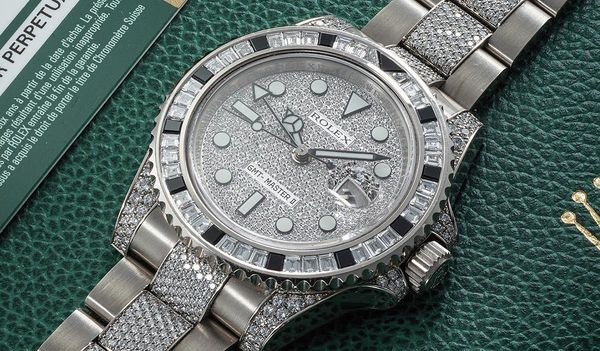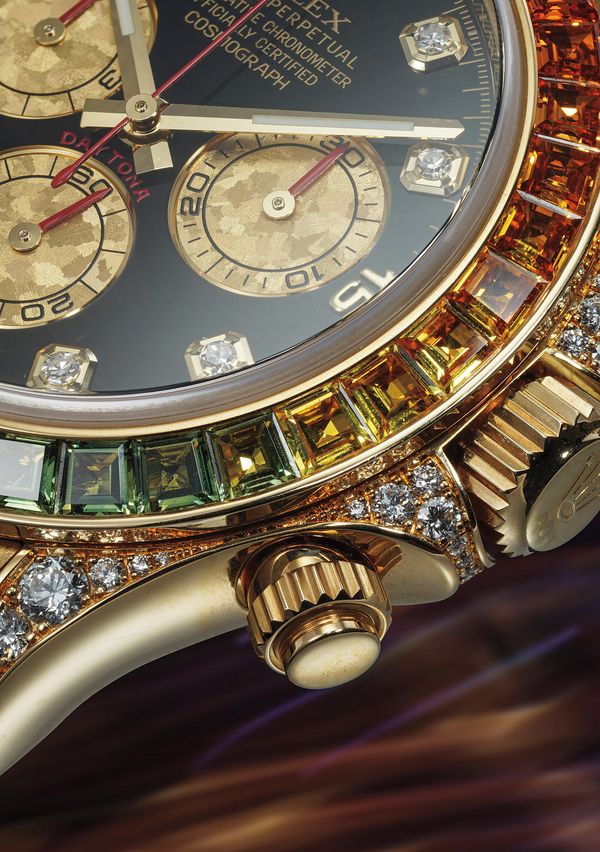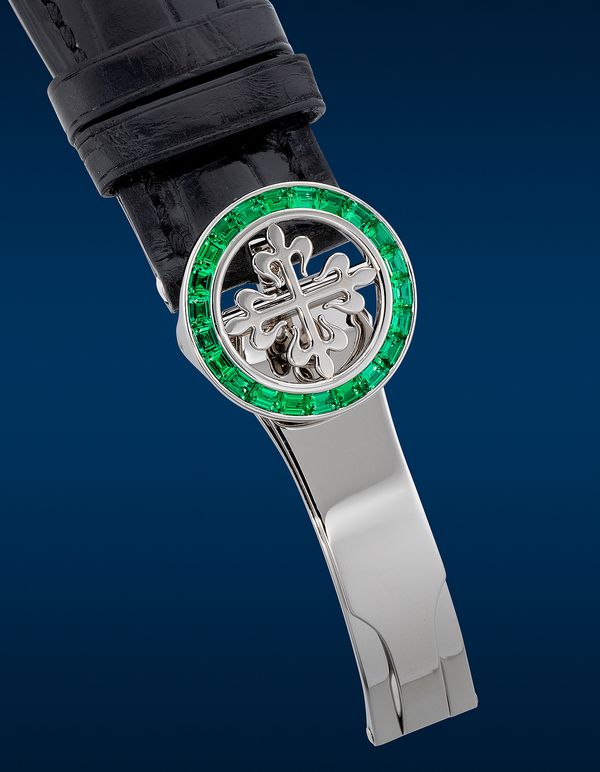Our first live auctions of the fall 2023 season are here! The PHILLIPS Geneva Watch Auction: XVIII, takes place on November 3 and 4, at La Réserve Genève, and the Hong Kong Watch Auction: XVII, takes place on November 24 and 25, at our West Kowloon headquarters. The auction includes more than 180 of the world's finest watches – and naturally, there are a number of incredible gem-set pieces. To celebrate the upcoming auction season, we're republishing one of our top stories from last year this year, which takes an in-depth look at a few of the different techniques used when working with precious stones in watchmaking.
Sertissage, or gem-setting in French, harkens back to the very first bejewelled wristwatch made for the Queen of Naples created by Abraham-Louis Breguet in 1810. Over the centuries, watchmakers and brands have continued to develop the intricate craft to exhibit the endless designs of timepieces endowed with precious gems.
While many collectors today appreciate bedazzled timepieces, the intricate craft that lies behind every gem-set piece is often overlooked. While watchmaking is its own delicate form of art, it is perhaps the combination of natural gems and mechanical perfection that brings a unique sense of harmony when combined, usually resulting in what we invoke as masterpieces.
The journey begins with the watchmaker, gemmologist and the gem-setter to design and envision the finished masterpiece. Throughout this process, every single precise measurement of the design process must be perfect. One miscalculation can often result to starting the entire painstaking process from scratch.
The quality of each individual gemstone from cut, clarity, carat, and colour must be examined by the experienced eye of the gemmologist. Meanwhile, the gem-setter is responsible for preparing the components on the wristwatch to be set individually by hand, first by sculpting the cavities with a graver for each stone to be set upon. This process is usually repeated numerous times in order to minimize any unnecessary gaps between each setting.
While each precious gem is individually cut, established firms such as Rolex tolerates variances of no more than 2 hundredths of a millimetre, which is around a quarter of the diameter of a human hair. Once each stone is placed on its individual ‘seat’, the gem-setter, depending on the method of the setting, secures each stone by its surrounding metal. While the setting requires immense precision, it is the tremendous skill and experience of the setter that brings out the utmost brilliance and ‘fire’ of each gemstone they way in which light penetrates the stone reflected on the underside of the setting.
There are various types of gem-setting that can be seen on timepieces to enhance the beauty of the gemstones depending on its cut, carat and design.
Bezel Setting
The oldest form of gem-setting, it features a very specific method of securing a gemstone in place by wrapping the edges of a gemstone with what is referred as a "collar." In some ways, it is considered as the most secured method to secure a gemstone, however it minimizes the exposure of light to the gemstone. This method can still be seen on some wristwatches with a gem-set crown, or in some cases the bezel.
Claw Setting
This method of setting features curved metal prongs that are used to hold the stones in place that are commonly seen in crafting jewellery pieces. Used in timepieces as well, the method is not commonly seen today as it reveals plenty of metals that watchmakers tend to avoid.
Pavé Setting
Regarded as the most utilized method of setting in timepieces, the method requires the gem-setter to create the cavity directly on the metal of the case or the dial of the watch, therefore a precise calculation of how much metal to be used on a case is highly essential before the setting process. The setter creates a series of holes on the case or dial and creating small beads using the excess metal that holds the stones in place. Each stone must be identical in its size and cut and each row must be perfectly aligned. Minimizing the metal shown, the pavé setting is favoured by most watchmakers.
Invisible Setting
Originally invented by Cartier and Van Cleef & Arpels in the 1930s, the invisible setting is also known as the “mystery setting”. Taking a completely different approach to the methods listed above, the invisible setting on timepieces often requires the stones to be specifically cut, with a groove on the back of each stone, which is then secured on a metal rail. The result is a seamless display of the gemstones with no prongs visible. The method can be used for both brilliant-cut and baguette-cut gemstones.
With that said, gem-setting on timepieces is truly and utterly an art on its own. The level of craftsmanship, precision and quality of the gems, each play an important factor to the final appeal of the masterpiece. PHILLIPS in Association with Bacs & Russo proudly presents a curated selection of bedazzled timepieces offered at the Hong Kong Watch Auction: XV offering a wide array of selection featuring various intricate styles of the art of gem-setting.
You can learn more, place a bid, and view the entire Geneva Watch Auction: XVIII catalog here, and the Hong Kong Watch Auction: XVII, here.
About Phillips In Association With Bacs & Russo
The team of specialists at PHILLIPS Watches is dedicated to an uncompromised approach to quality, transparency, and client service. Phillips in Association with Bacs & Russo holds the world record for the most successful watch auction, with its Geneva Watch Auction: XIV having realized $74.5 million in 2021. Over the course of 2021 and 2022, the company sold 100% of the watches offered, a first in the industry, resulting in the highest annual total in history across all the auction houses at $227 million.
Recommended Reading
Why The Rolex GMT-Master II 'Ice' Matters






